
The Enchanting Baltic Sea Coast of Germany
Discover the Baltic Sea Coast in Germany - A blend of scenic beauty, historical charm, and vibrant coastal culture awaits you.
The Baltic Sea Coast in Germany is a hidden gem that offers a unique blend of natural beauty, rich history, and vibrant culture. Stretching from the Danish border in the north to the Polish border in the east, this coastal region is dotted with charming seaside towns, pristine beaches, and lush landscapes. Whether you are looking to relax on golden sands, explore medieval towns, or indulge in local cuisine, the Baltic Sea Coast has something for everyone. The region is known for its picturesque islands like Rügen and Usedom, which are famous for their stunning cliffs, sandy beaches, and elegant spa towns. These islands offer a perfect retreat for nature lovers and those seeking tranquility. The coastal cities of Lübeck and Rostock are steeped in history, with their well-preserved medieval architecture, bustling harbors, and lively cultural scenes. Lübeck, a UNESCO World Heritage site, is particularly renowned for its Gothic brick buildings and historical significance as a former Hanseatic League city. For outdoor enthusiasts, the Baltic Sea Coast provides numerous opportunities for activities such as cycling, sailing, and hiking. The region's national parks and nature reserves, like the Jasmund National Park with its famous chalk cliffs, are perfect for exploring the diverse flora and fauna. Additionally, the coastal waters are ideal for water sports, including windsurfing and kiteboarding. No visit to the Baltic Sea Coast would be complete without sampling the local seafood, especially the freshly caught fish served in many seaside restaurants. The Baltic Sea Coast in Germany is a destination that promises a memorable experience, combining the charm of historical towns, the allure of beautiful natural landscapes, and the pleasures of seaside relaxation.
Local tips in Baltic Sea Coast
- Visit during the summer months for the best weather and to enjoy beach activities.
- Explore the islands of Rügen and Usedom for stunning landscapes and peaceful retreats.
- Don't miss the historical city of Lübeck, especially its medieval Old Town and delicious marzipan.
- Try local seafood dishes at seaside restaurants for a taste of fresh, regional cuisine.
- Take a bike tour along the coast to fully appreciate the scenic beauty and charming villages.
The Enchanting Baltic Sea Coast of Germany
The Baltic Sea Coast in Germany is a hidden gem that offers a unique blend of natural beauty, rich history, and vibrant culture. Stretching from the Danish border in the north to the Polish border in the east, this coastal region is dotted with charming seaside towns, pristine beaches, and lush landscapes. Whether you are looking to relax on golden sands, explore medieval towns, or indulge in local cuisine, the Baltic Sea Coast has something for everyone. The region is known for its picturesque islands like Rügen and Usedom, which are famous for their stunning cliffs, sandy beaches, and elegant spa towns. These islands offer a perfect retreat for nature lovers and those seeking tranquility. The coastal cities of Lübeck and Rostock are steeped in history, with their well-preserved medieval architecture, bustling harbors, and lively cultural scenes. Lübeck, a UNESCO World Heritage site, is particularly renowned for its Gothic brick buildings and historical significance as a former Hanseatic League city. For outdoor enthusiasts, the Baltic Sea Coast provides numerous opportunities for activities such as cycling, sailing, and hiking. The region's national parks and nature reserves, like the Jasmund National Park with its famous chalk cliffs, are perfect for exploring the diverse flora and fauna. Additionally, the coastal waters are ideal for water sports, including windsurfing and kiteboarding. No visit to the Baltic Sea Coast would be complete without sampling the local seafood, especially the freshly caught fish served in many seaside restaurants. The Baltic Sea Coast in Germany is a destination that promises a memorable experience, combining the charm of historical towns, the allure of beautiful natural landscapes, and the pleasures of seaside relaxation.
When is the best time to go to Baltic Sea Coast?
Iconic landmarks you can’t miss
Warnemünde lighthouse
Discover the beauty and history of the Warnemünde Lighthouse, a stunning coastal landmark offering panoramic views and rich maritime heritage.
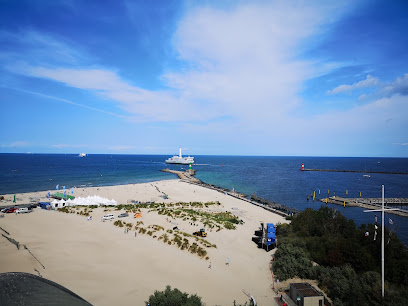
Seebrücke Zinnowitz
Experience the breathtaking beauty of Seebrücke Zinnowitz, a charming wooden pier on the Baltic Sea offering stunning views and delightful activities.
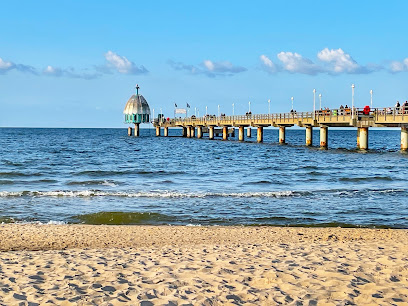
Kühlungsborn Pier
Discover the stunning Kühlungsborn Pier - a vibrant seaside escape with breathtaking views, local delicacies, and unforgettable beach experiences.

Jasmund National Park
Explore the breathtaking landscapes, iconic chalk cliffs, and rich biodiversity of Jasmund National Park along the Baltic Sea coast.
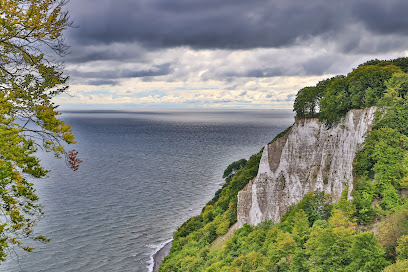
Salzhaff
Discover the tranquil beauty of Salzhaff, a nature preserve and public beach in Rerik, Germany, perfect for relaxation and outdoor adventures.
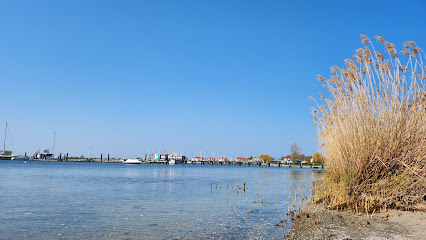
Heiligenhafen pier
Discover stunning coastal views and vibrant promenades at Heiligenhafen Pier, a must-visit destination on the Baltic Sea for all travelers.

Seebrücke Niendorf
Explore the breathtaking Seabrücke Niendorf, a coastal haven in Timmendorfer Strand, perfect for beach lovers and adventure seekers.
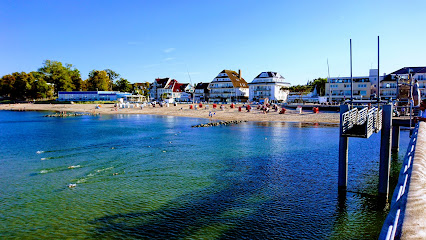
Königsstuhl Kreidefelsen
Discover the breathtaking views and rich biodiversity at Königsstuhl Kreidefelsen, a stunning natural attraction on Germany's Baltic Sea coast.
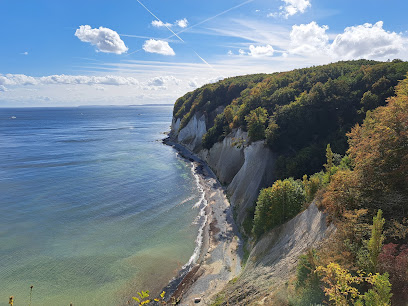
Maritim Hotel Lübeck-Travemünde
Discover the elegance of Maritim Hotel Lübeck-Travemünde, where luxury meets the breathtaking views of the Baltic Sea in a charming coastal town.
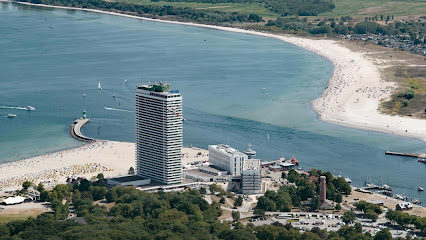
Strand Zempin
Discover the tranquil beauty of Strand Zempin, a stunning beach destination on the Baltic Sea, perfect for relaxation and adventure.
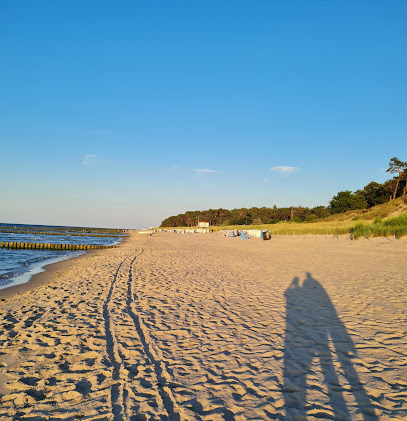
Darßer Ort Natureum
Explore the Darßer Ort Natureum – where nature meets education in a captivating museum and aquarium experience.
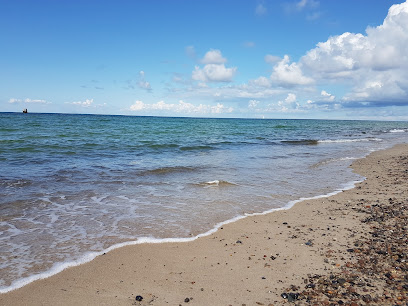
DJH Youth Hostel Prora with campsite
Experience the beauty of Rügen Island at DJH Youth Hostel Prora, where adventure meets comfort by the stunning Baltic Sea.
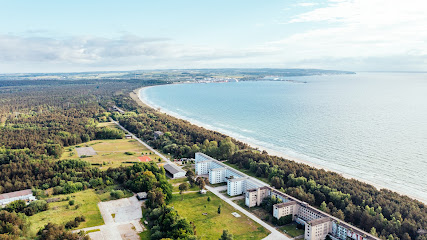
Hotel Kaiserhof Heringsdorf
Discover the serene beauty and exceptional hospitality at Hotel Kaiserhof Heringsdorf on the stunning Baltic coast.
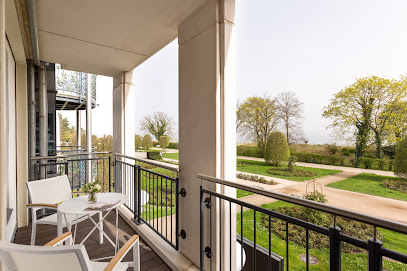
Siebenschneiderstein
Explore the captivating natural beauty and rich heritage of Siebenschneiderstein, a hidden gem in Germany's scenic landscapes.
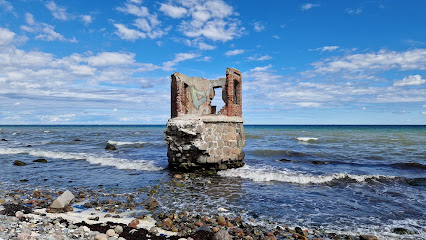
Seebrücke Schönberger Strand
Discover the breathtaking Seebrücke Schönberger Strand, a stunning observation deck along Germany's Baltic coast offering captivating views and relaxing beachside experiences.

Unmissable attractions to see
Kühlungsborn Pier
Experience the breathtaking views and vibrant seaside atmosphere at Kühlungsborn Pier, a stunning destination on the Baltic Sea coast.
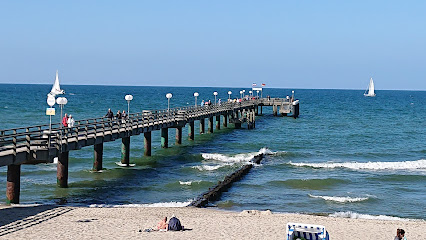
Jasmund National Park
Explore breathtaking cliffs, lush forests, and diverse wildlife at Jasmund National Park, a stunning natural destination on the Baltic Sea.
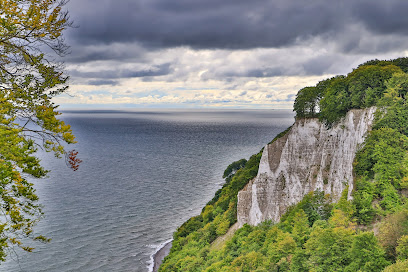
Ostsee Therme
Experience the ultimate blend of excitement and relaxation at Ostsee Therme, where every moment is a splash of joy by the Baltic Sea.
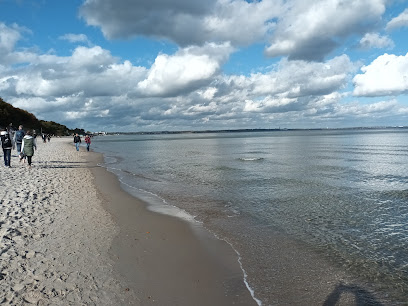
Vorpommersche Bodenlandschaft National Park
Discover the breathtaking landscapes and rich biodiversity of Vorpommern Boddenlandschaft National Park, a true gem of Germany's natural heritage.
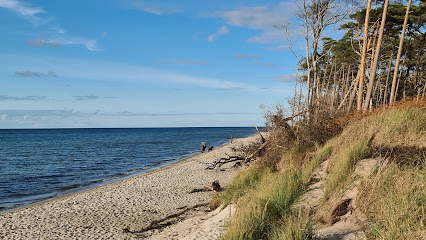
Leuchtturm Timmendorf Strand
Discover the stunning Leuchtturm Timmendorf Strand, a historic lighthouse and a coastal paradise on Insel Poel, perfect for beach lovers and adventurers.
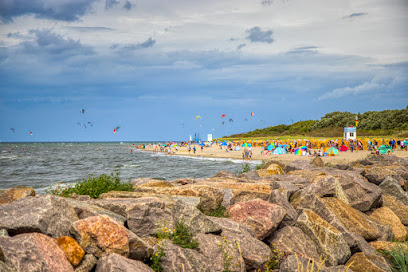
Salzhaff
Discover the serene beauty and outdoor adventures of Salzhaff, a coastal paradise near Rerik, Germany, perfect for relaxation and nature exploration.
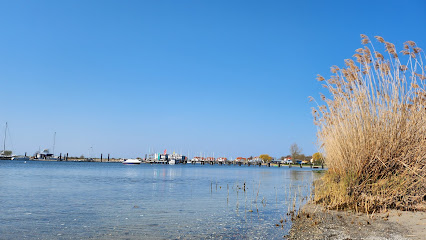
Rügen
Experience the breathtaking beauty and rich culture of Rügen Island, Germany's largest island, nestled in the stunning Baltic Sea.
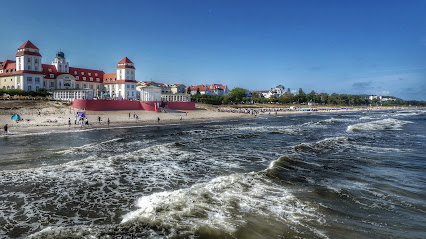
Königsstuhl Kreidefelsen
Discover the awe-inspiring beauty of Königsstuhl Kreidefelsen, where striking chalk cliffs meet the serene Baltic Sea in Germany.
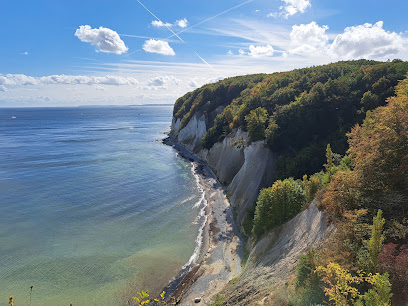
Seebrücke Niendorf
Discover the breathtaking Seabrücke Niendorf in Timmendorfer Strand, where stunning coastal views, vibrant promenades, and local culinary delights await.
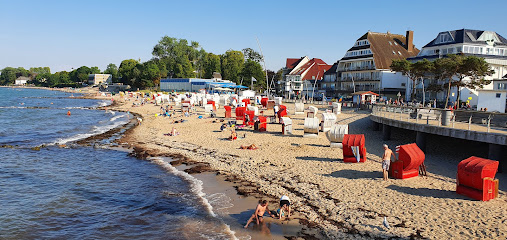
Laboe-Strand
Experience the beauty and history of Laboe-Strand, a premier beach destination on Germany's Baltic coast, perfect for relaxation and adventure.
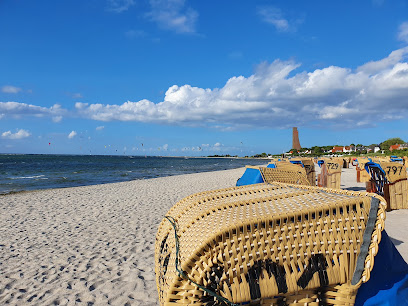
Weissenhäuser Strand
Experience the magic of Weissenhäuser Strand, a holiday park where seaside adventure meets family-friendly fun in a beautiful coastal setting.
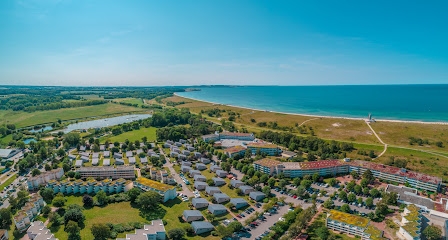
Göhren Pier
Discover the breathtaking views and local charm at Göhren Pier, the perfect spot for relaxation and exploration on Rügen Island.
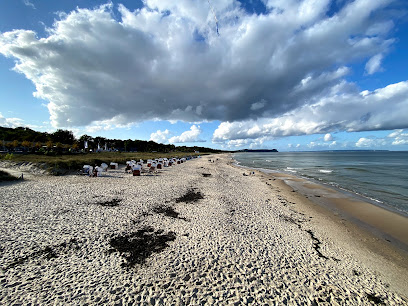
Usedom
Discover Usedom, an idyllic Baltic island known for its stunning beaches, charming resorts, and rich cultural experiences, perfect for every traveler.
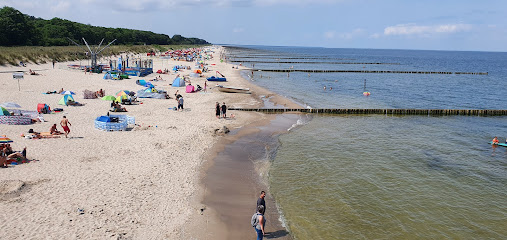
Seebrücke Boltenhagen
Experience the breathtaking beauty of Seebrücke Boltenhagen, a captivating seaside bridge offering stunning views, beach access, and delightful local culture.
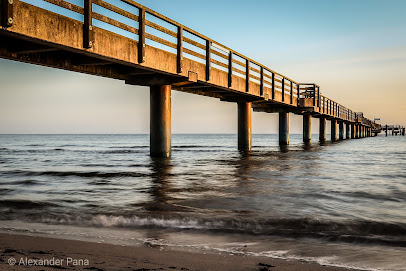
Aleja Gwiazd Sportu
Discover the beauty and history behind Aleja Gwiazd Sportu, a scenic tribute to Poland's sporting legends in Dziwnów.
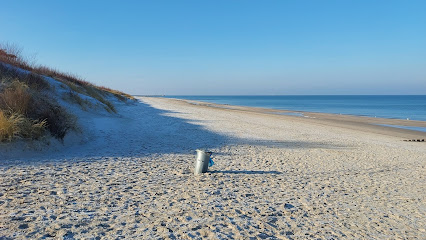
Essential places to dine
Usedomer Brauhaus
Experience authentic German cuisine and locally brewed beers at Usedomer Brauhaus in Heringsdorf's inviting beer garden.
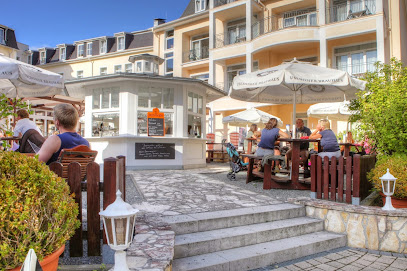
Restauracja Promenada Baltic Park Molo
Experience authentic Polish cuisine at Restauracja Promenada in beautiful Świnoujście – where every meal is a seaside delight.
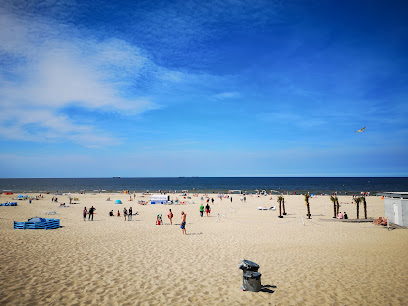
Wolkenlos Timmendorfer Strand
Discover Wolkenlos Timmendorfer Strand: A perfect blend of exquisite dining and breathtaking Baltic Sea views.
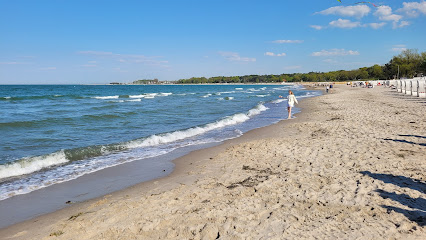
Nautilus
Discover Nautilus in Putbus: where exquisite dining meets charming hospitality for an unforgettable culinary journey.
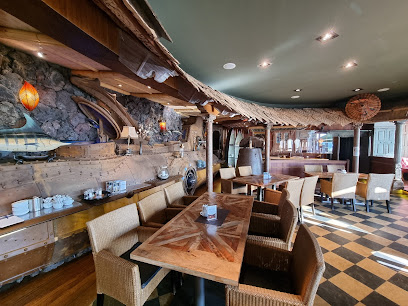
Restauracja Promenada Baltic Park Fort
Experience exquisite seafood and traditional Polish cuisine with breathtaking views at Restauracja Promenada Baltic Park Fort in Świnoujście.
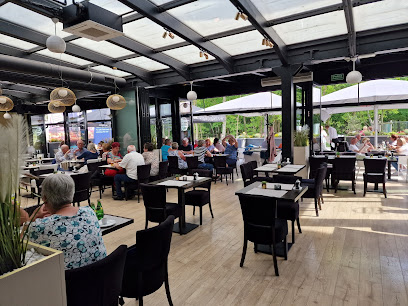
BEACH HOUSE Kühlungsborn Strand
Discover exquisite dining at BEACH HOUSE Kühlungsborn Strand - where ocean views meet culinary delight in every bite.
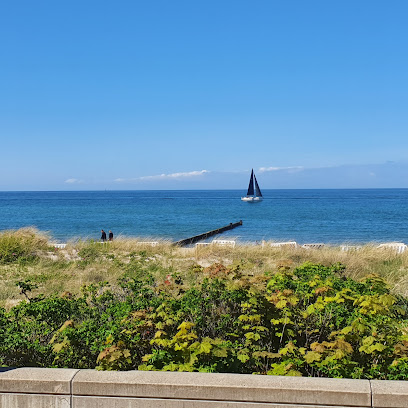
Grillstube BROILER
Experience the best grilled flavors at Grillstube BROILER in Rostock – where every meal is a celebration of taste!
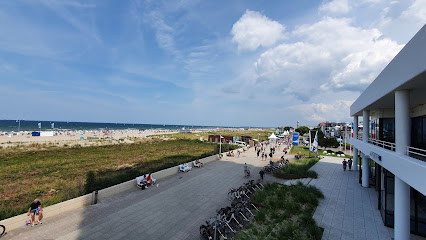
Nordsee
Discover fresh seafood delights at Nordsee in Munich's historic Viktualienmarkt – where ocean flavors meet local charm.
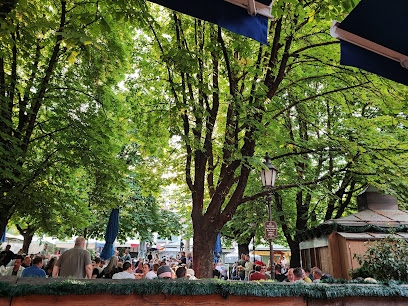
ZWICKL - Gastlichkeit am Viktualienmarkt
Discover authentic Bavarian flavors at Zwickl - a culinary gem near Viktualienmarkt in Munich offering hearty dishes and local brews.
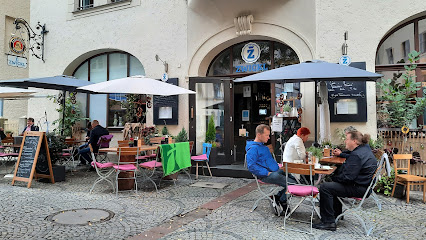
Restaurant & Hotel Villa Salve
Experience culinary delights at Restaurant & Hotel Villa Salve on Binz's beautiful Strandpromenade with breathtaking sea views.
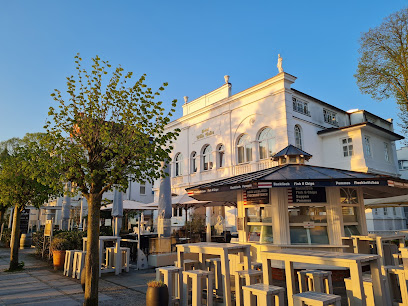
Restaurant Laurin Südtirol
Experience authentic South Tyrolean cuisine in Munich at Restaurant Laurin – where tradition meets modern dining excellence.
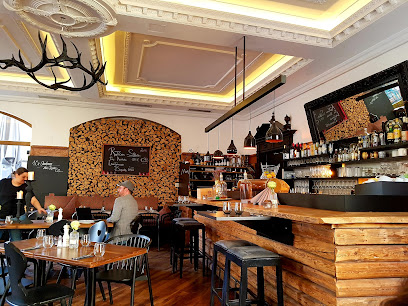
Restaurant & Café Traveblick
Experience exquisite local cuisine at Restaurant & Café Traveblick in Travemünde, offering breathtaking views and a welcoming atmosphere.
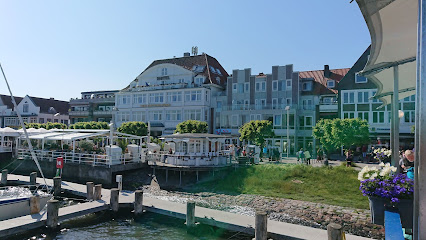
Restaurant Am Strom
Experience exquisite European dining at Restaurant Am Strom in Rostock—where fresh seafood meets charming waterfront views.
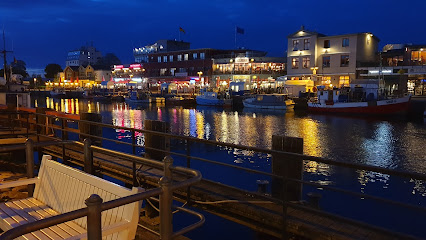
Gaststübchen Kuddel-Daddel-Du
Discover authentic German seafood at Gaststübchen Kuddel-Daddel-Du in Kühlungsborn – where fresh flavors meet cozy seaside charm.
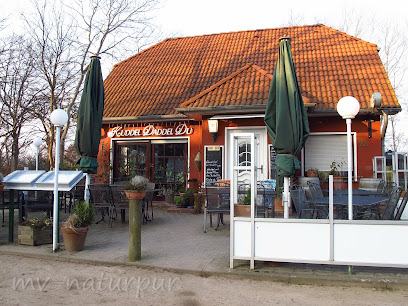
Salt & Silver am Meer
Experience exquisite seafood dining with breathtaking ocean views at Salt & Silver am Meer in Sankt Peter-Ording.
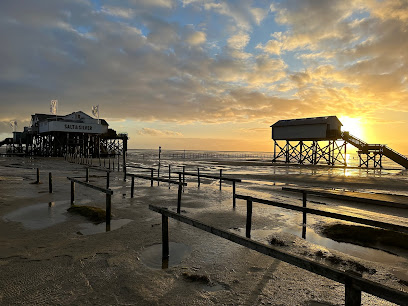
Markets, malls and hidden boutiques
Centro Oberhausen
Explore Centro Oberhausen, Germany's vibrant shopping mall with over 200 stores, diverse dining options, and exciting entertainment for all ages.

KaDeWe - Kaufhaus des Westens
Explore KaDeWe - Kaufhaus des Westens, an iconic shopping destination in Berlin offering luxury brands, gourmet food, and a taste of history.
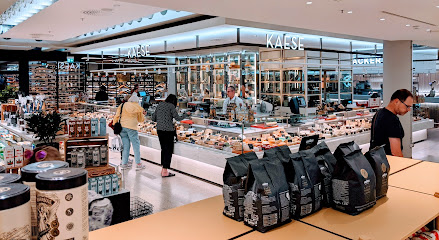
Mall of Berlin
Experience the ultimate shopping adventure at the Mall of Berlin, featuring over 300 shops, diverse dining options, and exciting entertainment.

Altmarkt-Galerie Dresden
Explore the Altmarkt-Galerie Dresden, where shopping meets culture in the heart of a historic city.

ALEXA Berlin
Discover ALEXA Berlin, a premier shopping mall in Mitte featuring diverse shops, dining, and entertainment in a vibrant urban setting.
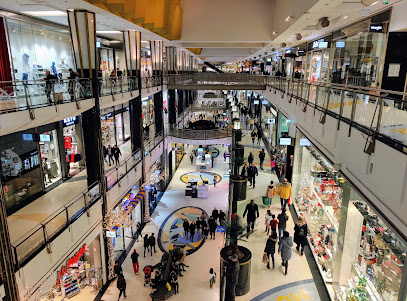
Bikini Berlin
Discover the innovative shopping and cultural vibrancy of Bikini Berlin, a unique mall experience in the heart of the city.
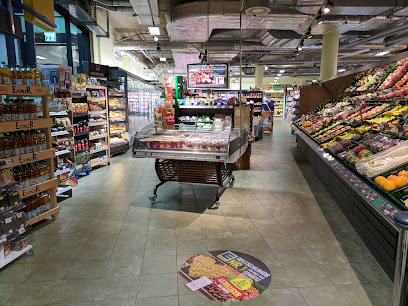
Rügen
Explore Rügen, the largest island in Germany, known for its breathtaking beaches, stunning cliffs, and rich cultural heritage, perfect for every traveler.
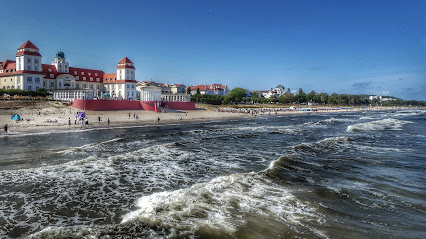
Seebrücke Niendorf
Discover the charm of Seebrücke Niendorf, a stunning pier at Timmendorfer Strand, where scenic views, local culture, and coastal adventures await.
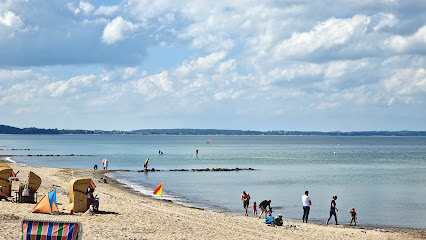
Laboe-Strand
Discover Laboe-Strand, a charming beach destination with golden sands, rich maritime heritage, and vibrant local culture along the stunning Baltic Sea.
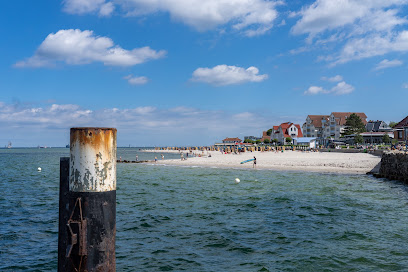
Kaufland Świnoujście
Explore the best of local and international products at Kaufland Świnoujście, your ultimate supermarket destination in Poland.
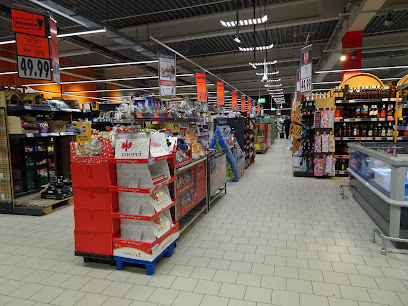
Fehmarn
Discover the beauty of Fehmarn, a stunning island in the Baltic Sea, perfect for beach lovers and nature enthusiasts alike.
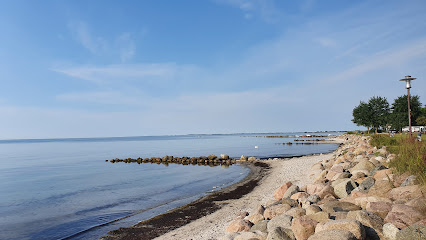
GALERIA Offenburg
Explore GALERIA Offenburg: A Shopping Paradise with Trendy Fashion, Unique Finds, and a Welcoming Atmosphere in the Heart of Offenburg.
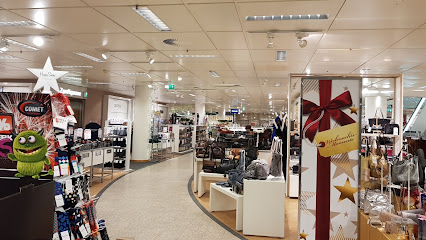
Zalando Outlet Store Stuttgart
Shop stylishly at the Zalando Outlet Store Stuttgart, your go-to destination for fashionable clothing, shoes, and accessories at great prices.

ARBOREA Marina Resort Neustadt
Experience ultimate relaxation and adventure at ARBOREA Marina Resort Neustadt, a perfect blend of luxury, nature, and wellness.

Ostseeresort Olpenitz
Experience the ultimate Baltic retreat at Ostseeresort Olpenitz, where stunning beaches meet luxurious holiday accommodations for your perfect escape.
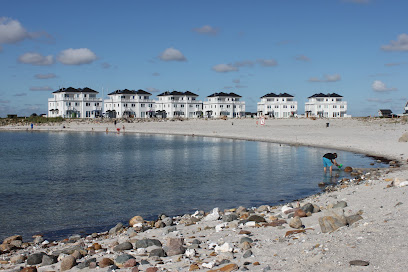
Essential bars & hidden hideouts
Usedomer Brauhaus
Discover the authentic flavors of Heringsdorf at Usedomer Brauhaus, a premier brewpub offering craft beers and delicious local dishes in a charming atmosphere.
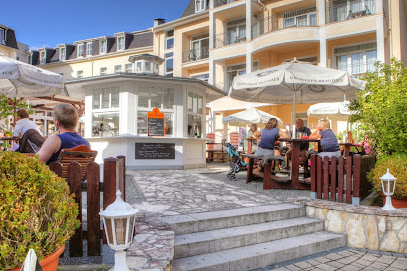
BrewDog Berlin Mitte
Discover the vibrant atmosphere and diverse craft beer selection at BrewDog Berlin Mitte, where every sip tells a story.
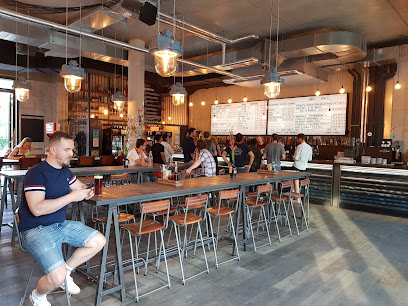
Restauracja Promenada Baltic Park Molo
Experience the culinary delights of Restauracja Promenada Baltic Park Molo, where local flavors meet stunning sea views in Świnoujście.
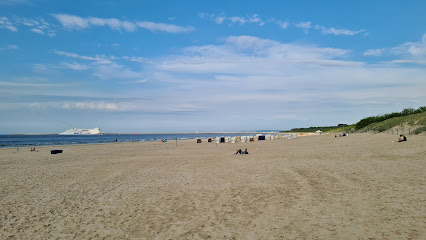
Deck Beach Club Heiligendamm
Discover the charm of Deck Beach Club Heiligendamm, a perfect seaside escape featuring delicious cuisine, refreshing drinks, and stunning coastal views.
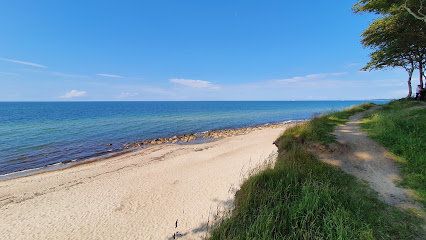
Le Lion • Bar de Paris
Experience the elegance of Le Lion • Bar de Paris in Hamburg, where exquisite cocktails meet a sophisticated atmosphere for an unforgettable night.

Sky Beach Stuttgart
Discover the ultimate rooftop getaway at Sky Beach Stuttgart, where city life meets beach vibes in a stunning urban setting.
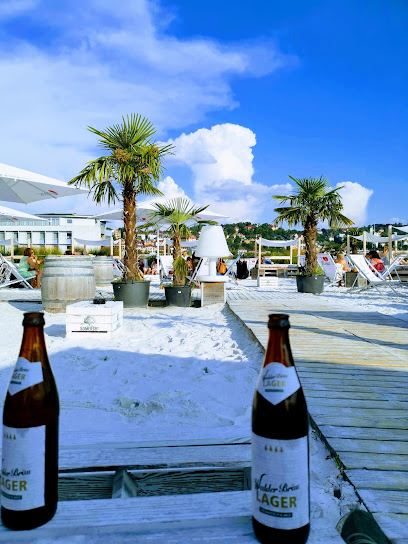
Strandoase
Discover Strandoase in Rostock: A vibrant seaside bar offering refreshing drinks, a lively atmosphere, and stunning coastal views for an unforgettable experience.
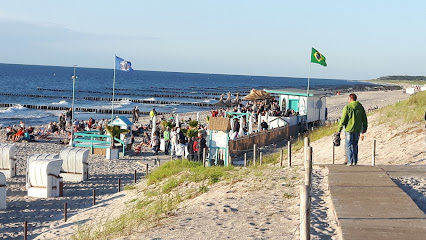
Strandbar 28
Experience the vibrant atmosphere and stunning views at Strandbar 28, the perfect beachside bar in Binz for relaxation and enjoyment.
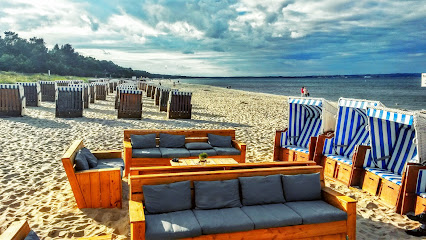
The Boilerman Bar Hafenamt
Discover exceptional cocktails and stunning views at The Boilerman Bar Hafenamt in Hamburg's trendy waterfront scene.
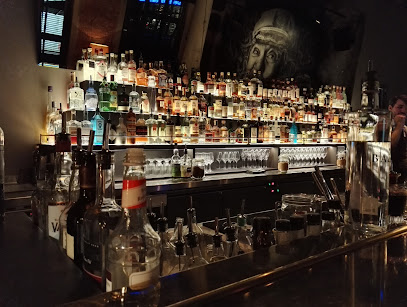
Charlie's Beach
Discover the perfect blend of relaxation and excitement at Charlie's Beach, a vibrant bar in Berlin's Mitte district with delightful drinks and a lively atmosphere.
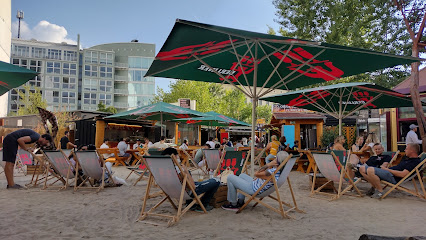
Gin House Dresden
Experience the finest selection of artisanal gins at Gin House Dresden, where craftsmanship meets a cozy nightlife ambiance.
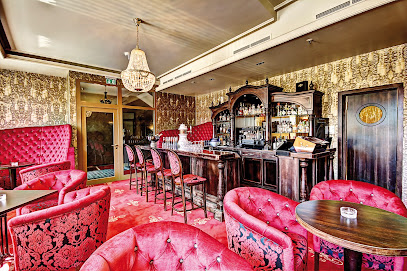
Strandbar An Der Seebrücke
Experience the ultimate beachside enjoyment at Strandbar An Der Seebrücke, where exquisite cocktails meet breathtaking Baltic Sea views.
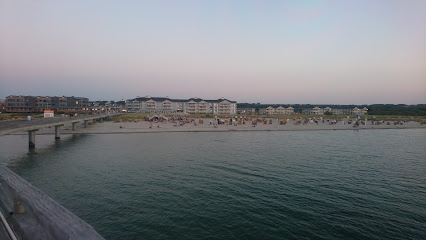
Coco Lounge
Discover the vibrant atmosphere and expertly crafted cocktails at Coco Lounge, Heringsdorf's premier cocktail bar for an unforgettable night out.
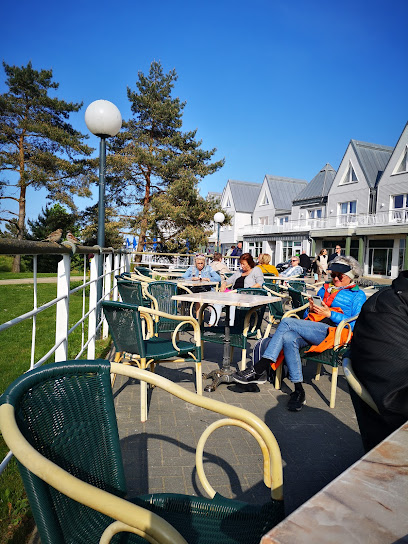
Pub Sealord
Experience the vibrant atmosphere and local flavors at Pub Sealord in Zinnowitz, a perfect spot for unwinding and mingling.
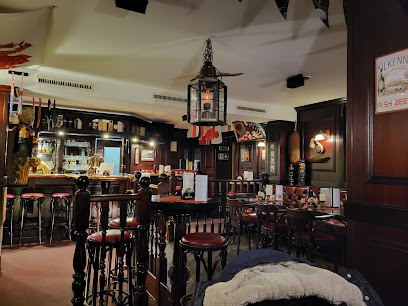
Mascha's Shisha- Cocktail- & Partylounge
Experience the vibrant nightlife of Stralsund at Mascha's Shisha- Cocktail- & Partylounge, where great cocktails and shisha await.
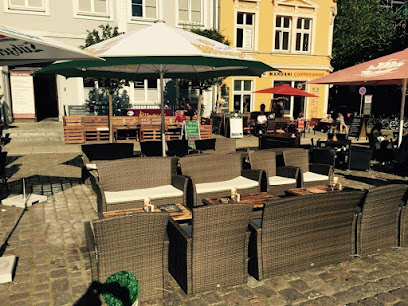
Local Phrases about Baltic Sea Coast
-
- HelloMoin
[moin] - GoodbyeTschüss
[tʃʏs] - YesJa
[ja] - NoNein
[naɪn] - Please/You're welcomeBitte
[bɪtə] - Thank youDanke
[ˈdaŋkə] - Excuse me/SorryEntschuldigung
[ɛntˈʃʊldɪɡʊŋ] - How are you?Wie geht es dir?
[viː ɡeːt ɛs diː] - Fine. And you?Gut. Und dir?
[ɡuːt ʊnt diː] - Do you speak English?Sprechen Sie Englisch?
[ˈʃprɛçən ziː ˈɛŋlɪʃ] - I don't understandIch verstehe nicht
[ɪç fɛɐ̯ˈʃteːə nɪçt]
- HelloMoin
-
- I'd like to see the menu, pleaseIch möchte bitte die Speisekarte sehen
[ɪç mœçtə ˈbɪtə diː ˈʃpaɪzəkɑrtə zeːən] - I don't eat meatIch esse kein Fleisch
[ɪç ˈɛsə kaɪn flaɪʃ] - Cheers!Prost!
[pʁɔst] - I would like to pay, pleaseIch möchte bitte zahlen
[ɪç mœçtə ˈbɪtə ˈtsaːlən]
- I'd like to see the menu, pleaseIch möchte bitte die Speisekarte sehen
-
- Help!Hilfe!
[ˈhɪlfə] - Go away!Geh weg!
[ɡeː vɛk] - Call the Police!Rufen Sie die Polizei!
[ˈʁuːfn ziː diː pɔˈliːtsaɪ̯] - Call a doctor!Rufen Sie einen Arzt!
[ˈʁuːfn ziː ˈaɪ̯nən ˈaʁt͡s] - I'm lostIch habe mich verlaufen
[ɪç ˈhaːbə mɪç fɛɐ̯ˈlaʊ̯fn̩] - I'm illIch bin krank
[ɪç bɪn kraŋk]
- Help!Hilfe!
-
- I'd like to buy...Ich möchte kaufen...
[ɪç mœçtə ˈkaʊ̯fən] - I'm just lookingIch schaue nur
[ɪç ˈʃaʊ̯ə nuːɐ̯] - How much is it?Wie viel kostet es?
[viː fiːl ˈkɔstət ɛs] - That's too expensiveDas ist zu teuer
[das ɪst tsu ˈtɔɪ̯ɐ] - Can you lower the price?Können Sie den Preis senken?
[ˈkœnən ziː deːn ˈpʁaɪ̯s ˈzɛŋkən]
- I'd like to buy...Ich möchte kaufen...
-
- What time is it?Wie spät ist es?
[viː ʃpɛt ɪst ɛs] - It's one o'clockEs ist ein Uhr
[ɛs ɪst aɪ̯n ʔuːɐ̯] - Half past (10)Halb zehn
[halb tseːn] - MorningMorgen
[ˈmɔʁɡən] - AfternoonNachmittag
[ˈnaχmɪˌtaːk] - EveningAbend
[ˈaːbənt] - YesterdayGestern
[ˈɡɛstɐn] - TodayHeute
[ˈhɔʏ̯tə] - TomorrowMorgen
[ˈmɔʁɡən] - 1Eins
[aɪ̯ns] - 2Zwei
[tsvaɪ̯] - 3Drei
[dʁaɪ̯] - 4Vier
[fiːɐ̯] - 5Fünf
[fʏnf] - 6Sechs
[zɛks] - 7Sieben
[ˈziːbn̩] - 8Acht
[axt] - 9Neun
[nɔʏ̯n] - 10Zehn
[tseːn]
- What time is it?Wie spät ist es?
-
- Where's a/the...?Wo ist ein/der...?
[vo ɪst aɪ̯n/deːɐ̯] - What's the address?Was ist die Adresse?
[vas ɪst diː ˈadʁɛsə] - Can you show me (on the map)?Können Sie mir zeigen (auf der Karte)?
[ˈkœnən ziː mɪr ˈtsaɪ̯ɡən (aʊ̯f deːɐ̯ ˈkaʁtə)] - When's the next (bus)?Wann kommt der nächste (Bus)?
[van kɔmt deːɐ̯ ˈnɛxtə (bʊs)] - A ticket (to ....)Eine Fahrkarte (nach ...)
[ˈaɪ̯nə ˈfaːɐ̯kɑʁtə (naχ)]
- Where's a/the...?Wo ist ein/der...?
History of Baltic Sea Coast
-
During the Middle Ages, the Baltic Sea Coast in Germany was a significant player in the Hanseatic League, a powerful commercial and defensive confederation of merchant guilds and market towns. Cities like Lübeck, Rostock, and Wismar flourished as major trading hubs, establishing extensive trade networks across Northern Europe. Lübeck, often referred to as the 'Queen of the Hanse,' served as the League's de facto capital, with its strategic location fostering economic prosperity and cultural exchange.
-
Following the Thirty Years' War, the Peace of Westphalia in 1648 granted parts of the Baltic Sea Coast, including Western Pomerania, to Sweden. This period, known as Swedish Pomerania, lasted until 1815 and left a lasting impact on the region's architecture, administration, and culture. The town of Stralsund, in particular, played a crucial role as a Swedish military and administrative center, with many of its historic buildings reflecting this era.
-
During World War II, the Baltic Sea Coast in Germany witnessed significant military activity and destruction. The port cities of Kiel and Rostock were heavily bombed due to their strategic importance. After the war, the region was divided, with Mecklenburg-Vorpommern becoming part of East Germany under Soviet influence. The subsequent decades saw extensive reconstruction efforts and the establishment of new socio-political systems, which have left a lasting mark on the region's development.
-
The fall of the Berlin Wall in 1989 and the subsequent reunification of Germany brought significant changes to the Baltic Sea Coast. The region experienced rapid economic growth, tourism development, and cultural revitalization. Historic towns like Wismar and Stralsund were designated UNESCO World Heritage Sites, recognizing their well-preserved medieval architecture and historical significance. The Baltic Sea Coast today is a blend of rich history, cultural heritage, and modern attractions.
-
The Baltic Sea Coast in Germany has a deep-rooted maritime heritage, celebrated through various festivals and traditions. Events like the Hanse Sail in Rostock and the Kieler Woche in Kiel attract visitors from around the world, showcasing historic ships, sailing regattas, and maritime culture. These festivals provide a glimpse into the region's seafaring past and its ongoing connection to the sea, highlighting the importance of maritime activities in shaping local identities and economies.
Baltic Sea Coast Essentials
-
The Baltic Sea Coast in Germany is easily accessible by various means of transportation. The closest major international airports are Hamburg Airport (HAM) and Berlin Brandenburg Airport (BER). From these airports, you can take a train, bus, or rent a car to reach coastal cities such as Lübeck, Rostock, and Kiel. The Deutsche Bahn (DB) railway network provides extensive connections to the Baltic Sea Coast, making train travel a convenient option. Additionally, major highways like the A1 and A20 connect inland cities to the coast.
-
Public transportation along the Baltic Sea Coast is well-developed. Regional trains and buses operated by DB Regio and local transport companies connect cities and towns along the coast. For local travel, city buses, trams, and bicycles are popular and readily available. Renting a car can provide more flexibility, especially for visiting remote areas and scenic routes. Ferries also operate between various coastal towns and nearby islands, offering a picturesque way to explore the region.
-
The official currency in Germany is the Euro (EUR). Credit and debit cards are widely accepted in hotels, restaurants, and shops, but it is advisable to carry some cash, especially for small purchases or in rural areas. ATMs are plentiful in coastal cities and towns. Mobile payment options like Google Pay and Apple Pay are also increasingly accepted.
-
The Baltic Sea Coast in Germany is generally very safe for tourists. However, it is always good to take standard precautions. Petty crimes like pickpocketing can occur in crowded tourist areas, so remain vigilant and keep an eye on your belongings. Areas around major train stations and some parts of larger cities may have higher crime rates, but they are still relatively safe compared to many other destinations.
-
In case of an emergency, dial 112 for immediate assistance from police, fire, or medical services. Hospitals and clinics are available in major coastal cities. It is recommended to have travel insurance that covers medical emergencies. Pharmacies (Apotheken) are widespread and can provide over-the-counter medications and advice. English-speaking staff is commonly available in larger medical facilities.
-
Fashion: Do wear casual and comfortable clothing. In coastal areas, beachwear is appropriate at the beach but not in restaurants or shops. Religion: Do respect local customs, especially in churches. Avoid loud conversations and dress modestly when visiting religious sites. Public Transport: Do validate your ticket before boarding trains and buses. Don’t talk loudly or play loud music on public transport. Greetings: Do greet people with a firm handshake. A 'Guten Tag' or 'Hallo' is a polite way to greet someone. Eating & Drinking: Do try local seafood and regional dishes. Don't tip excessively; rounding up the bill or leaving a 5-10% tip is standard.
-
To experience the Baltic Sea Coast like a local, visit the weekly markets where you can buy fresh produce and local specialties. Take a walk along the beach promenades, join a sailing tour, or rent a bicycle to explore the scenic coastal paths. Engaging with locals in smaller towns can provide unique insights into the region's culture and history. Don't miss trying the local smoked fish and enjoying a traditional 'Kaffee und Kuchen' (coffee and cake) in one of the many seaside cafés.
Trending Landmarks in Baltic Sea Coast
-
Warnemünde lighthouse
-
Seebrücke Zinnowitz
-
Kühlungsborn Pier
-
Jasmund National Park
-
Salzhaff
-
Heiligenhafen pier
-
Seebrücke Niendorf
-
Königsstuhl Kreidefelsen
-
Maritim Hotel Lübeck-Travemünde
-
Strand Zempin
-
Darßer Ort Natureum
-
DJH Youth Hostel Prora with campsite
-
Hotel Kaiserhof Heringsdorf
-
Siebenschneiderstein
-
Seebrücke Schönberger Strand













